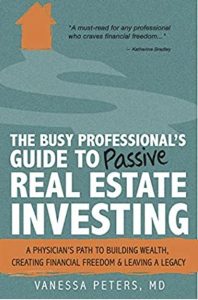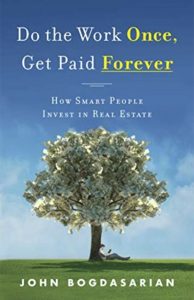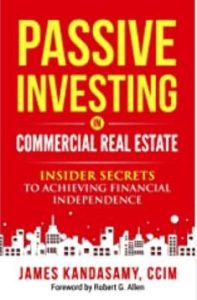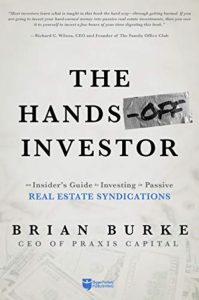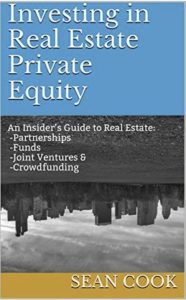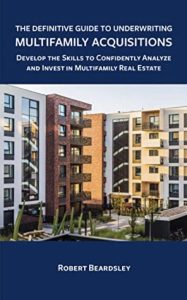5/24/2023
Dr. Steve Suh
Originally published at Left Field Investors where Steve is a co-founder.
*****
Most successful real estate investors can give you multiple recommendations for books that helped guide them in their journey. You can find a wide variety of real estate books with topics ranging from flipping properties to buy-and-hold rentals to investing in real estate investment trusts (REITs). If you have not done any real estate investing, you may want to check out the following classic books. Robert Kiyosaki’s Rich Dad, Poor Dad and its follow-up Cashflow Quadrant and Gary Keller’s The Millionaire Real Estate Investor are excellent books for understanding the advantages of passive cash flow and real estate investing.
“By reading, you download an entire person’s life into your head without having to live their life.” – James Altucher (best-selling author and podcaster)
Books on buying commercial properties like apartment buildings and self-storage facilities are also becoming more prevalent but are mainly geared towards teaching the budding active investor and, in the case of syndications, the general partner or sponsor. Fortunately, in the last few years, more books are targeting passive commercial real estate investors who are too busy or have no desire to be active syndication sponsors of large properties.
Although the term “passive investing” can mean investing in “Wall Street” index funds or even turnkey single-family rentals, in this article, I summarize my favorite books that will give you the confidence to passively invest in the commercial real estate space. I give each book a level of “education” rating just like college courses have. Books that are labeled “101” should be easily understood by newbie real estate investors while the “201”, “301” and “401” books will have increasingly more in-depth discussions about things like partnership compensation models and underwriting deals like a syndicator. But please do not assume that the 101 level books are too basic. These books will easily give you enough comfort to screen sponsors and to assess prospective properties.
The Busy Professional’s Guide to Passive Real Estate Investing (2019) by Vanessa Peters
Pages: 119
Level: 101
Review: When Dr. Vanessa Peters is not treating patients’ ailments in her family medicine practice, she is busy syndicating commercial real estate deals. With busy professionals, namely physicians, in mind, she wrote a thorough book on the advantages and pitfalls of passive syndication investing. The book starts out describing the difference between passive real estate investing and truly passive investing. The latter is probably the type of investing that busy professionals want to pursue. The author does a superb job of explaining terms that you will encounter in syndication materials. I appreciated the section on the three T’s for evaluating sponsors – Trust, Team, and Track record. Most of these passive investing books concentrate on multifamily assets, but she has an informative chapter on the merits of self-storage facilities and mobile home parks. The chapter named “Your Roadmap to Financial Freedom” illustrates with the use of tables how you can achieve a six-figure passive income in eight years. This chapter alone was worth the price of the book in my opinion. If you are interested in investing in real estate but are too busy to find, buy, and manage properties, then you can get a head start on passive investing by reading this book.
Do the Work Once, Get Paid Forever (2019) by John Bogdasarian
Pages: 141
Level: 101
Review: Author John Bogdasarian is founder and CEO of an investment group that owns $1/2 billion worth of commercial real estate and serves 400 investors. As he states in the Introduction, “this book is for professionals and business owners who have limited time and energy to nitpick the details of real estate investment deals. It’s for people who have the money to invest in real estate but need a good steward for that money.” The title can be deceiving, but “do the work once” refers to finding a few trustworthy sponsors and keep investing in their deals (“get paid forever”). Although there are no chapters dedicated to explaining deal metrics, the author probably does not want to bog down the future passive investor with these details. He instead emphasizes the philosophy of commercial real estate investing vs. other types of investing. The “Investor Due Diligence” chapter on vetting and aligning with sponsors is one of the most extensive of all the books discussed in this article. The author also gives some heartfelt advice on investing in general, such as not putting more than 20 percent of your net worth with one person or entity.
Passive Investing in Commercial Real Estate (2019) by James Kandasamy
Pages: 155
Level: 101 – 201
Review: When a book’s foreword is written by best-selling author Robert G. Allen (Nothing Down, Multiple Streams of Income, Creating Wealth, among others) and TheStreet.com (the website of stock market guru and Mad Money host Jim Cramer) lists this book as one of the best real estate investing books, you may want to pay attention to the contents in this book. I read it twice. Author and podcaster James Kandasamy, who has 1,700 apartment units under management, utilized his experiences as an operator to give readers a solid background to feel confident when discussing commercial properties with syndicators. One of my favorite sections was “Considering Deals” where he reviews core, value-add, and deep value-add properties, the main commercial asset classes, market cycles, and the types of syndication offerings (specific, blind pool, and funds). In the chapter on analyzing a deal, he admits that he does not want the reader to suffer from “analysis paralysis”. However, I did appreciate his excellent explanation of the metrics that are of most interest to investors: cash-on-cash return, equity multiple, average annualized return, and internal rate of return (IRR). By using examples to discuss the pros and cons of each metric, the reader should be able to discern these numbers in the private placement memorandum or executive summary. James writes in a conversational tone that enables the reader to finish the book in one or two sittings. Passive Investing in Commercial Real Estate should be an essential read for potential investors or those wanting to further their education.
The Hands-Off Investor (2020) by Brian Burke
Pages: 368
Level: 101 – 401
Review: This book is the longest in this group and is definitely the most complete. Author Brian Burke, who is CEO of his investment firm that has $200 million of real estate assets under management, has written a comprehensive road map for the passive investor. Although this book should be read from cover to cover, it can easily be used as an encyclopedic reference for multifamily syndication investing. The chapters are organized into sections on evaluating sponsors, evaluating the real estate, and evaluating the offerings and investment structure. The author provides convincing evidence for why the sponsor is the key to any syndication. An excellent sponsor can turn around a bad deal, but a bad or inexperienced sponsor can kill a great deal. I really appreciate the effort the author put into explaining each line item in the pro forma cash flow statement found in the executive/investment summary. Understanding the nuances of these vital figures can help an investor determine if an asset is going to have a good chance of reaching that goal IRR or cash-on-cash return. Many passive investors do not pay enough attention to debt structure, but the author again does not disappoint by giving us a thorough rundown of the different types of loans seen in these commercial deals. After several chapters on investment structures, underwriting, waterfalls, and syndication fees, the author concludes the book by walking the reader through the investment process from explaining the various documents to expectations during the investment to tax reporting and closing distributions. This outstanding book should be required reading for not only “hands-off investors”, but also for sponsors.
Investing in Real Estate Private Equity (2016) by Sean Cook
Pages: 151
Level: 201 – 301
Review: Written by an author using a pseudonym, this book is a comprehensive work on investing in real estate syndications. But if this is the first such book you pick up or download, it can be slightly intimidating. But I do like that it starts out with a glossary of common syndication and investing terms. The next chapters go in-depth on such topics as investment structures (REITs, syndications, private fuinds, crowdfunds, etc.) and real estate product types (office, retail, industrial, self-storage, apartments, triple-net, and land). My favorite chapter covers compensation models and fees. The author does a great job of illustrating the elusive “waterfall” compensation between sponsors and passive investors. The chapter on deal metrics thoroughly explains the usual suspects encountered in most investment/executive summaries – the ones that most passive investors would pay attention to the most. The book ends with a section on “pulling the trigger” to walk you through what to expect at each stage and to give you some familiarity with the necessary paperwork before wiring your money.
The Definitive Guide to Underwriting Multifamily Acquisitions (2020) by Robert Beardsley
Pages: 109
Level: 301-401
Review: Although this is the shortest book on this list, it certainly does not lack in content. I am not so sure this is the first book that a novice passive investor should read, but if you want to have a full comprehension of the underwriting metrics, look no further than this book. Author Robert Beardsley oversees acquisitions and capital markets for his real estate firm, and his straightforward explanations of advanced topics is a testament to his vast experience underwriting hundreds of potential multifamily acquisitions. The chapter on sensitivity analyses should be read several times because it discusses the various stress tests, such as breakeven occupancy, that should be evaluated to find deals that are more likely to succeed and are more resistant to “black swan” events. Since many investment summaries and private placement memorandums will not list these important parameters, this section will explain why you need to obtain this information from the sponsor before wiring your money. Robert also does an exceptional job of deconstructing the nuances of preferred returns vs. no preferred returns within the bigger picture of the total return. Passive investors should take their time digesting this book to gain a full understanding of the various metrics. Even experienced sponsors would probably have much to gain by reading this book.
Steve Suh is one of the founders of Left Field Investors. He began investing in real estate in 2005 when he bought his business’ office condo. After owning a few small residential rentals and seeing that it was not easily scalable, he transitioned to the world of passive investing in commercial real estate syndications. He enjoys learning and talking about real estate and hopes to educate more people about the merits of passive investing in the Left Field.
Nothing on this website should be considered financial advice. Investing involves risks which you assume. It is your duty to do your own due diligence. Read all documents and agreements before signing or investing in anything. It is your duty to consult with your own legal, financial and tax advisors regarding any investment.
